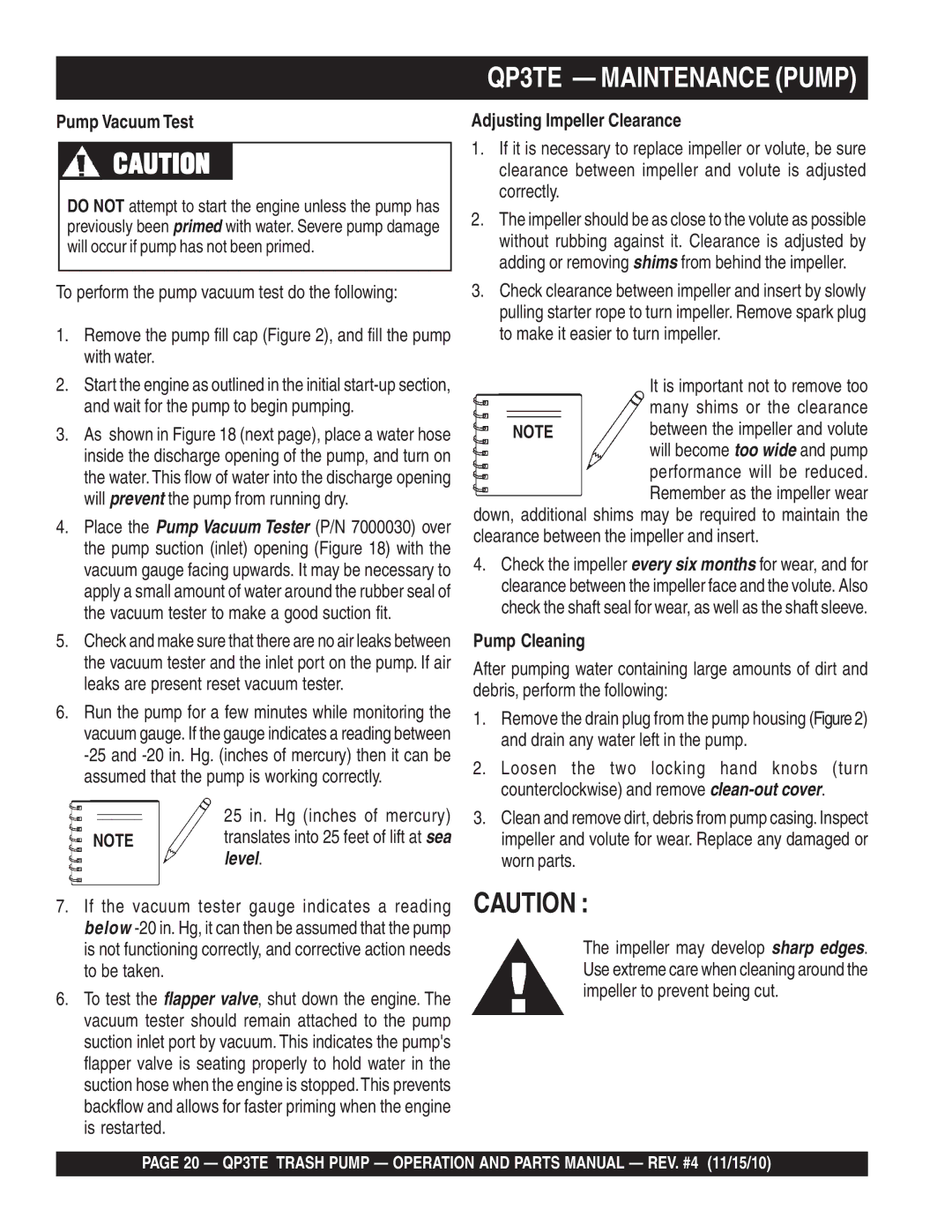QP3TE specifications
The Multiquip QP3TE is a robust, portable generator designed to meet the demands of construction sites, outdoor events, and various industrial applications. Renowned for its reliability and performance, the QP3TE is engineered to provide a continuous and efficient power supply.One of the main features of the QP3TE is its powerful engine. It is equipped with a durable, air-cooled, four-stroke engine that delivers a strong output without compromising fuel efficiency. This makes it not only effective but also economical for extended use. It typically has a fuel tank capacity that allows for many hours of continuous operation, ensuring that your power needs are met without frequent refueling.
The QP3TE stands out for its advanced technologies, including a digital inverter system. This technology ensures clean and stable power, making it suitable for sensitive electronics. Whether you’re using it to power construction tools or delicate devices, the inverter technology minimizes the risk of surges or spikes that could cause damage, rendering the QP3TE a versatile choice for both professional and recreational applications.
In addition to its robust power capabilities, the Multiquip QP3TE is designed with user-friendliness in mind. It features an intuitive control panel that allows for easy operation. Users can easily manage power output, monitor fuel levels, and access start and stop functions without any hassle. Comfort is also a priority; the generator is designed with a compact and lightweight form factor, making it easy to transport and set up in various locations.
Durability is another hallmark of the QP3TE. Constructed with high-quality materials, it’s built to withstand harsh working environments and adverse weather conditions. The generator is also equipped with a protective frame that helps absorb shocks and minimize wear and tear, enhancing its longevity.
Moreover, the QP3TE is engineered to comply with stringent emission standards, ensuring that it operates efficiently while minimizing its environmental footprint. This is an essential consideration for contractors and businesses focused on sustainability.
In summary, the Multiquip QP3TE generator combines powerful, efficient operation with user-friendly features and advanced technologies, making it a top-tier choice for a range of applications. Its enduring build quality, coupled with innovative design, ensures reliability and ease of use for professionals and outdoor enthusiasts alike. Whether for construction, events, or emergency backup, the QP3TE stands as a testament to Multiquip's commitment to quality and performance.

